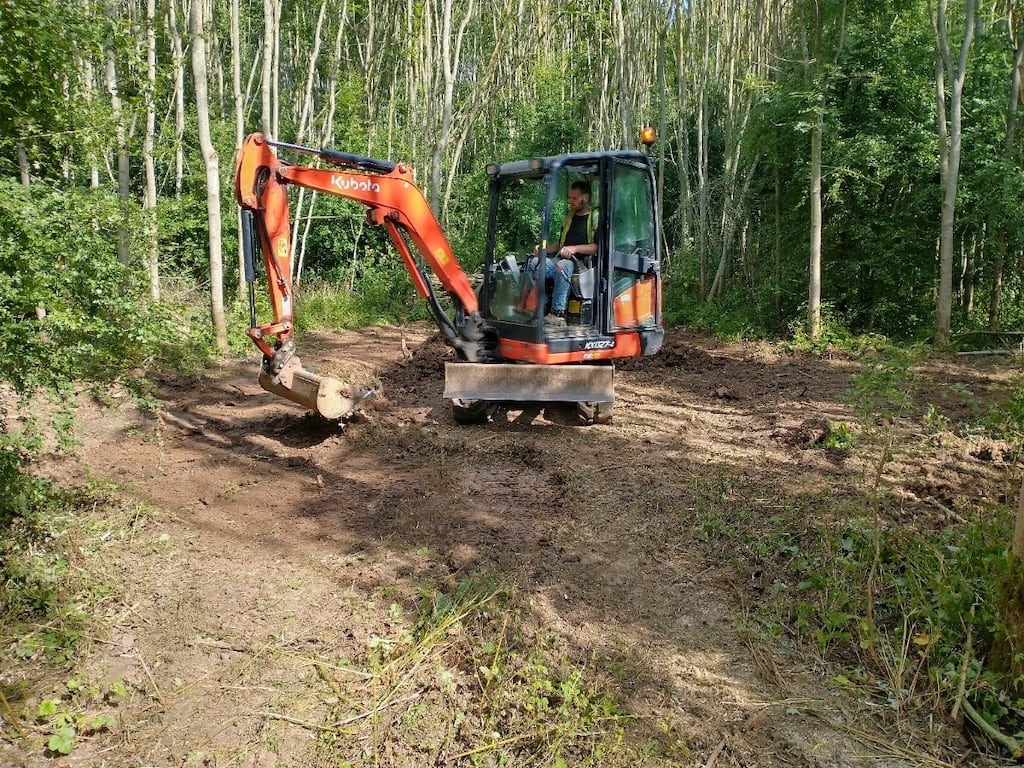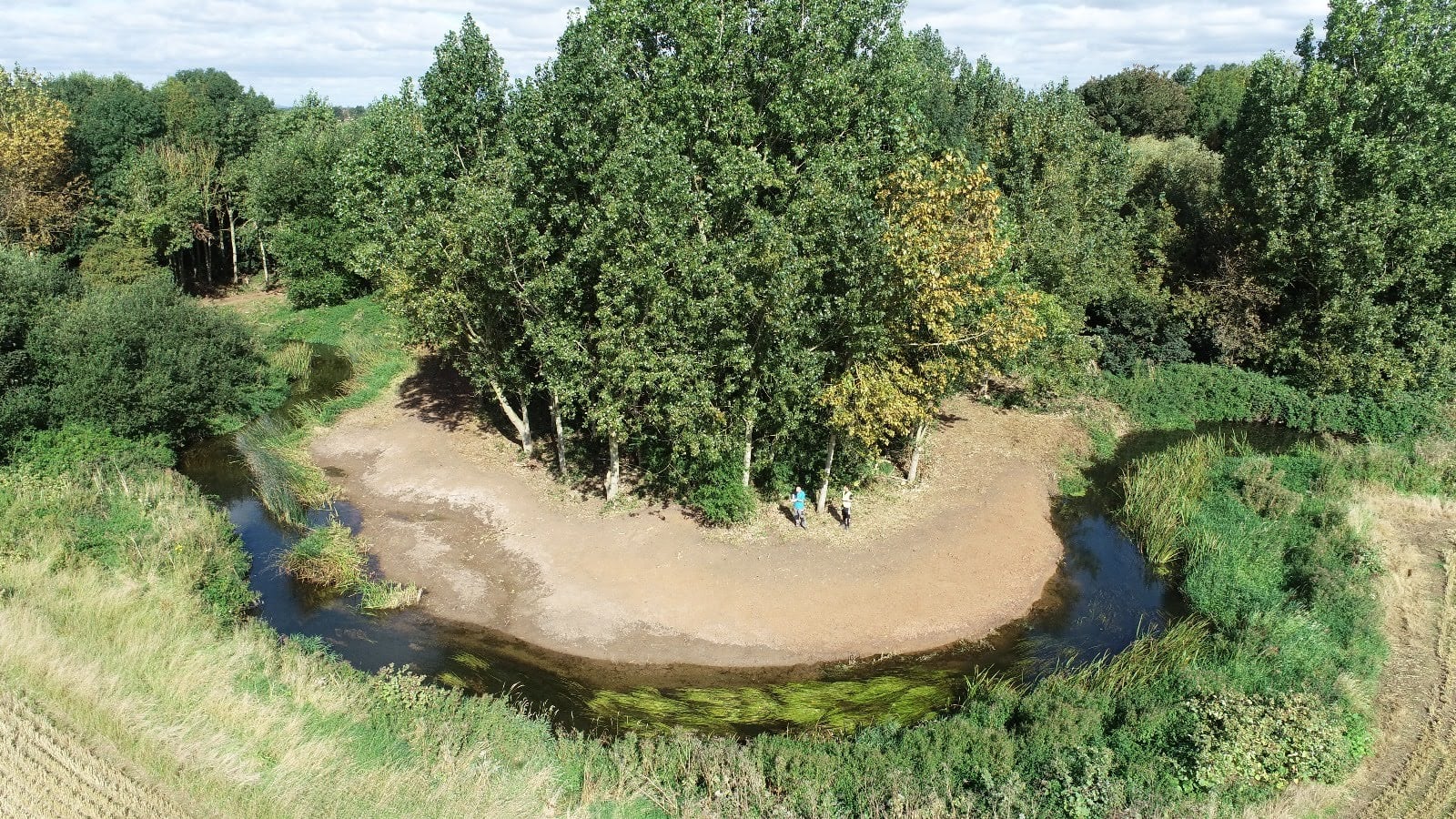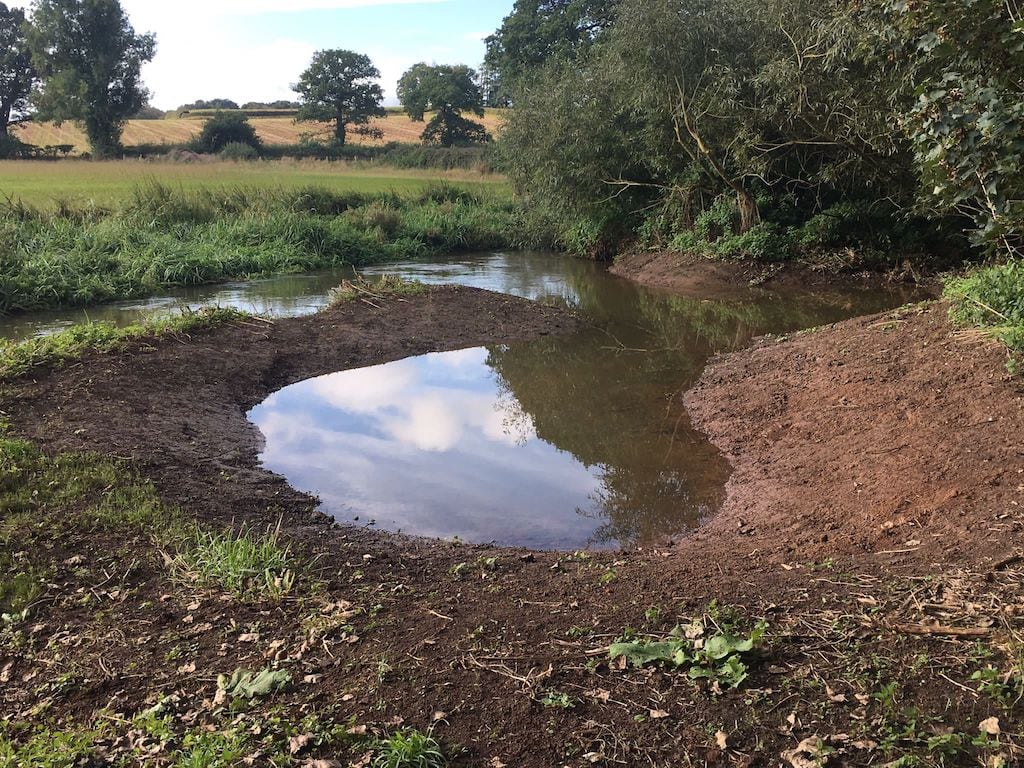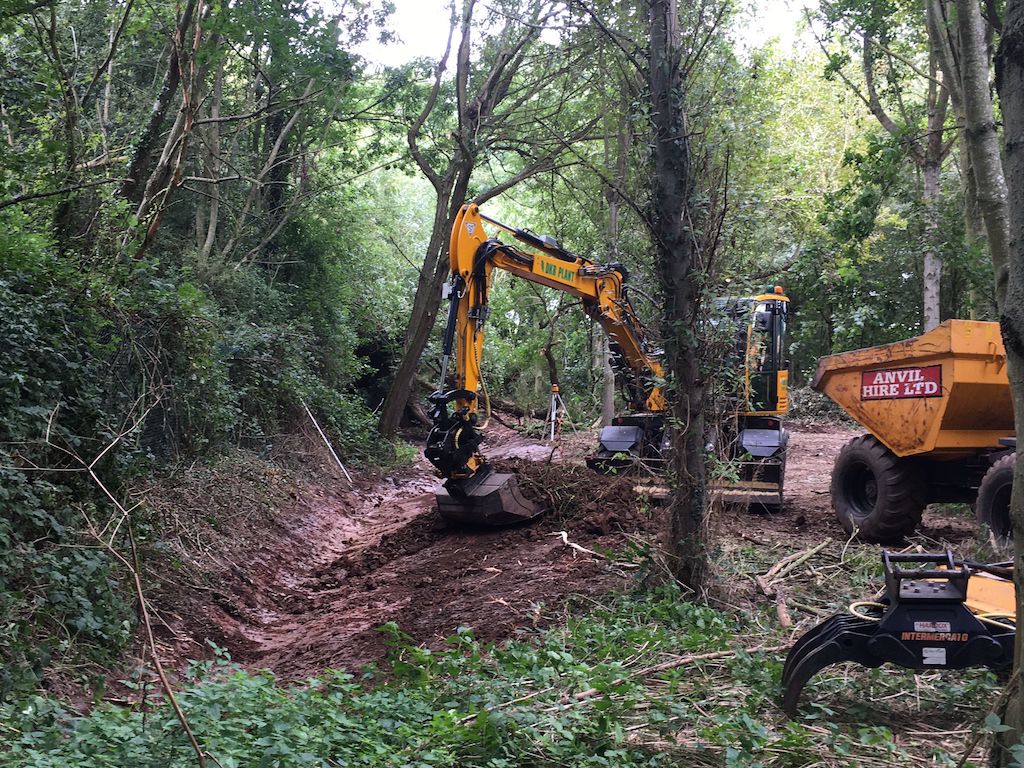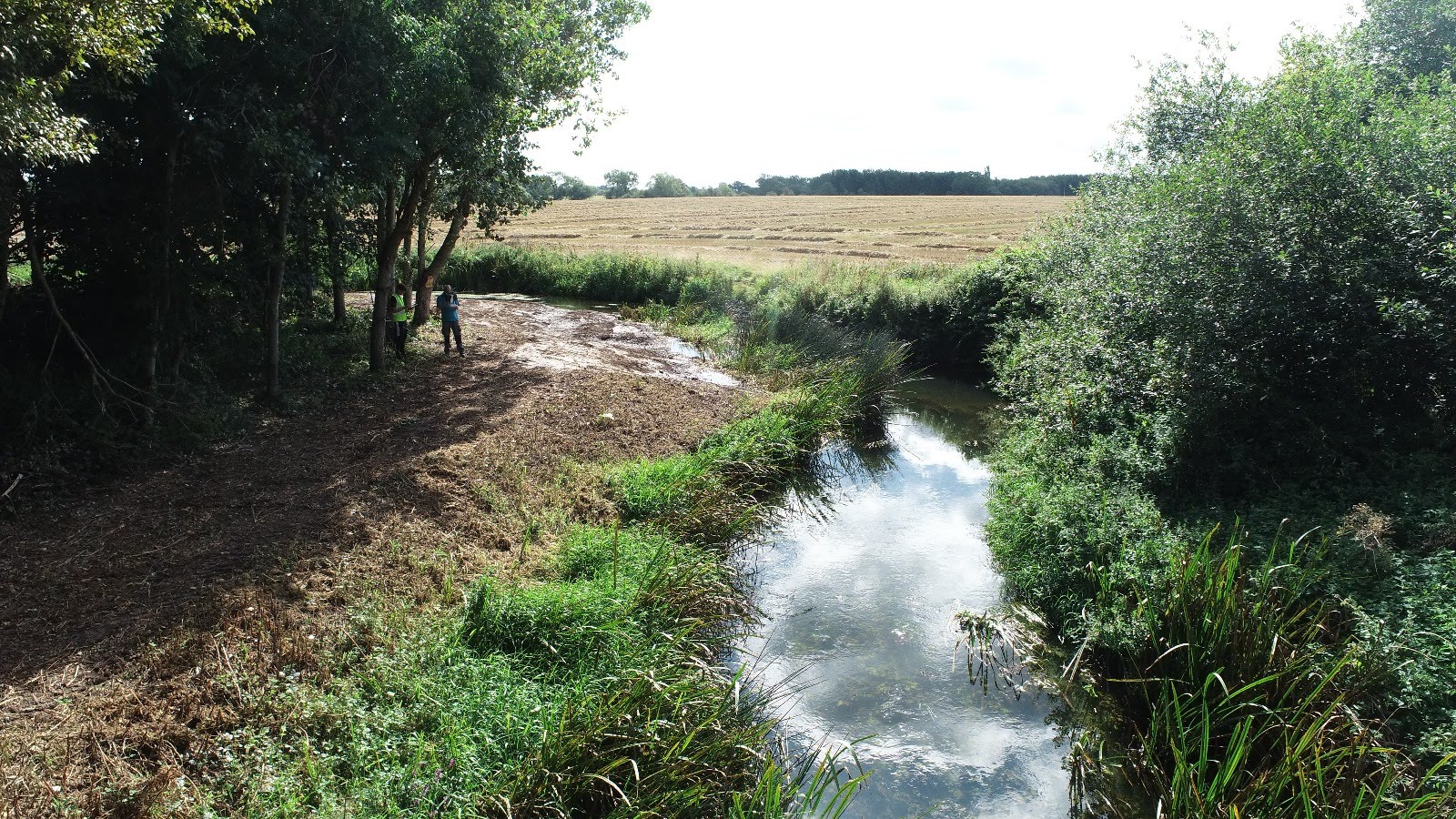River Restoration
Introduction
This river restoration project is guided by the River Mease Restoration Plan. The 2011 study identified areas in need of enhancement, rehabilitation or restoration, based on a number of assessment factors including riparian vegetation, bank erosion, channel straightening and lack of floodplain connectivity.
How does River Restoration work?
River restoration helps towards returning the SSSI into ‘good’ condition. The principal with river restoration techniques such as river bank re-profiling, the introduction of woody debris, and improving the riparian corridor, is that it restores natural features and processes of the river that have been damaged due to man-made modifications, over deepening, and diffuse pollution.
Restoring these processes leads to improvements in water quality, habitat quality and diversity for the designated species, and improved resilience towards climatic changes and pressures.
Since 2019 Trent Rivers Trust have been delivering river restoration projects funded by the Environment Agency in a multi-partner project involving Natural England, Catchment Sensitive Farming and the NFU.
Working with landowners
The success of the river restoration project depends on the support and involvement of farmers and landowners that own and manage the Mease. Farmers are involved from early on so designs can be developed that benefit the Mease and the land management practices. We understand the challenges farmers are facing as the farming landscape in the UK is changing, and offer advice as to how small changes in farming practices can benefit the river without having a detriment to farm businesses.
Our work so far
In the first three year phase of the project, 8 river restoration schemes were delivered, varying in scale from 0.2ha of floodplain habitat improvements to 2km stretches of river restoration.


